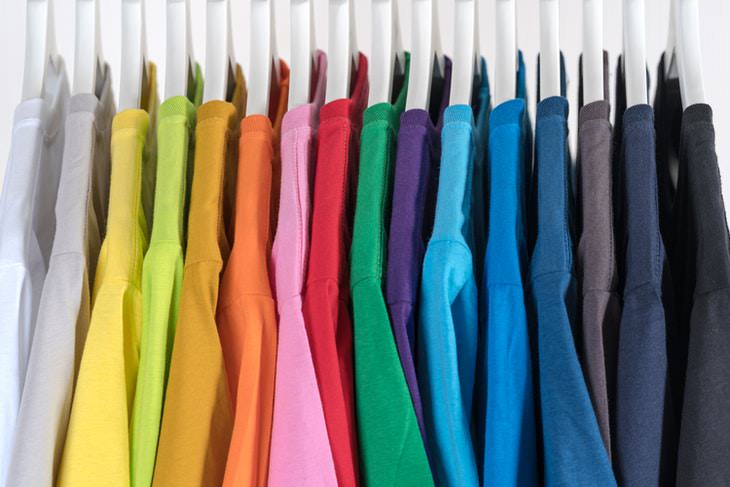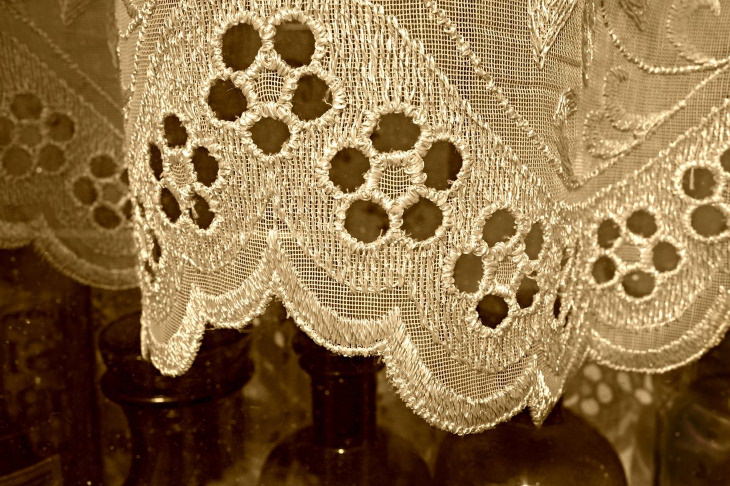A few preliminary tips and instructions
Fabrics come in many shapes and forms. Needless to say, the best way to tell what fabric your clothing item or any other textile is made of is by looking at the clothing label. Usually, the label will also contain some care instructions, but these can sometimes be imprecise or somewhat confusing. For example, did you know that there is a difference between the “dry clean” label and the “dry clean only” label?
Items labeled as “dry clean” can actually be hand-washed, it just means that dry cleaning is the best method the manufacturer suggests. “Dry clean only,” on the other hand, means that washing the item yourself can damage it. Little details about labels and fabrics like these are exactly the thing that can ruin a garment or (if you’re clever) save you lot’s of money on dry cleaning.
Both the texture of a fabric, e.g. whether it’s fluffy, dense, or smooth, and its chemical composition play a role in how it should be maintained. Fine woven fabrics like satin or silk, are usually on the delicate side and require more gentle care and maintenance. These fabrics are more lightweight, thinner, and more flexible, which makes them more prone to damage.
Rougher and denser fabrics, like denim, on the other hand, will be able to withstand higher washing temperatures and tumble drying. Generally speaking, fibers are divided into natural and synthetic. Natural fibers are made from plants and animals. For instance, cotton is made from plants, and wool is made of animal fleece. Synthetic fibers are just what they sound like - they are manufactured using synthetic matter - be it plastic fibers or chemically altered wood pulp.
Knowing what material your fabric is made of is important because it will help you prevent premature tears and holes, shrinkage, and loss of shape and color, in general. This is why we conveniently divided the care and maintenance tips in this article by fabric. You can use it as a cheat sheet to extend the life and vibrancy of your clothing and textiles.
1. Cotton

Cotton is one of the most popular fabrics in the world, and rightfully so. It is soft, lightweight, hypoallergenic, breathable, and natural. Cotton is made from cotton seeds processed and spun into cloth. Most likely, you have a wide variety of clothing and other textiles made of cotton, gingham, or muslin - all of which are cotton-based fabrics.
One important advantage of cotton is its ability to retain color and withstand high washing and ironing temperatures. Sturdy cotton pieces can be ironed at temperatures as high as 390°F (200°C). The only drawback of cotton is its proneness to creasing. Follow these care tips to keep your cotton T-shirts and other items fresh and crisp:
- Cotton garments can be machine-washed in warm water using any detergent.
- You can wash cotton in hot water to remove persistent stains. If you do, start with cold water and then crank the temperature up to hot to prevent shrinkage.
- If you have white cotton, you can use bleach on the hot water setting to get rid of stains.
- Tumble dry on low heat to prevent shrinkage or air-dry cotton items.
- Cotton can be ironed on the highest heat setting.
2. Synthetic fibers

There are dozens of synthetic fiber types available today. Nylon, acetate, polyester, and spandex are just three of the most popular ones. The advantage of synthetic fibers is their low cost as well as their relative resistance to shrinking and staining. These materials are synthetically produced, which makes them non-biodegradable.
Outerwear, such as jackets or parkas are made of nylon, but by far the most common type. Jeans, swimwear, and other articles of clothing are made of spandex, which is also known as Lycra or elastane. Lastly, most dry-fit sports clothing, as well as the overwhelming majority of tops, shirts, dresses, skirts, leggings, and even sweaters is made of polyester.
The disadvantage of these synthetic materials is that they can be easily damaged by heat. Follow these care recommendations when cleaning synthetic fabrics:
- Launder inside out in cold or warm water.
- Tumble dry on low heat or air dry.
- To remove a stain, apply stain remover on the affected area and allow it to sit for at least 10 minutes before washing.
- Check the clothing label before ironing, iron only on low heat.
Related Article: Why Overspend on Electricity? Dry Laundry the Natural Way!
3. Denim
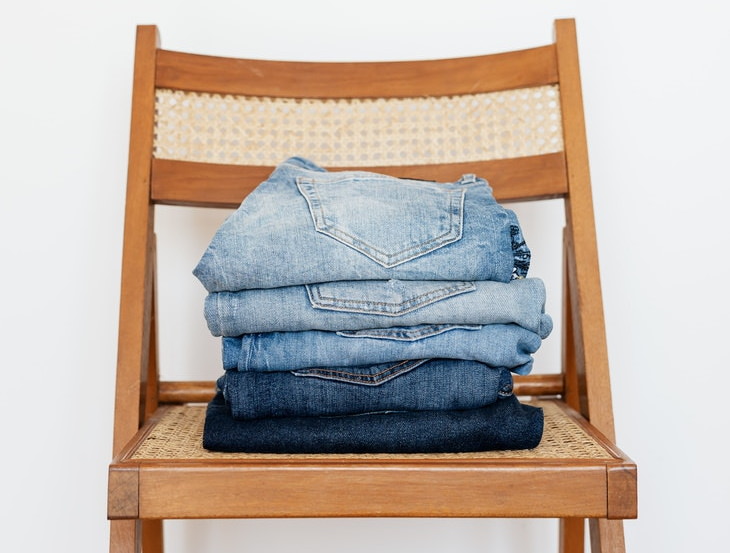
Denim is technically made of a cotton twill fabric, but since it’s so sturdy, it has slightly different care instructions than regular cotton. We don’t need to convince you that jeans are sturdy, durable, and comfortable. Most people have a selection of denim in their wardrobe already, so let’s move onto the care tips right away:
- Don’t wash denim too much to retain its shape. Experts recommend washing denim after every 10th wear at most.
- Machine-wash denim inside out, preferably in cold water to prevent shrinkage. Washing and drying inside-out prevent fading and deformed pockets.
- Denim items with stains should be pre-treated with a stain remover and washed in warm but not hot water.
- It’s best to air dry denim. Shake the jeans to straighten any wrinkles and simply hang the jeans in a shady area and wait for them to dry.
4. Linen

Linen is among the oldest fabrics invented by humankind. The luxurious linen fabric is strong but lightweight; it is also both absorbent and cooling. So it’s easy to say why it’s such a popular fabric even today. The cooling durable fabric is used in home decor and summer clothing. Linen is produced from the strand of the flax plant spun into yarn and blended with other natural materials.
The only disadvantage of linen is its proneness to creasing, so expect to regularly iron linen items or embrace the natural wrinkling of this fabric. Here’s how to care for clothing and home items made of linen:
- Washing linen often is actually beneficial, as every wash will make the fabric softer. Machine-wash or handwash in cold water. When hand-washing, avoid wringing to prevent creases.
- Hang-dry it in the shade or tumble dry on the cool setting. To prevent the fabric from becoming stiff, take it out of the dryer while still slightly damp.
- Iron on the warm or hot setting, if necessary.
Related Article: 9 Common Laundry Mistakes
5. Chiffon
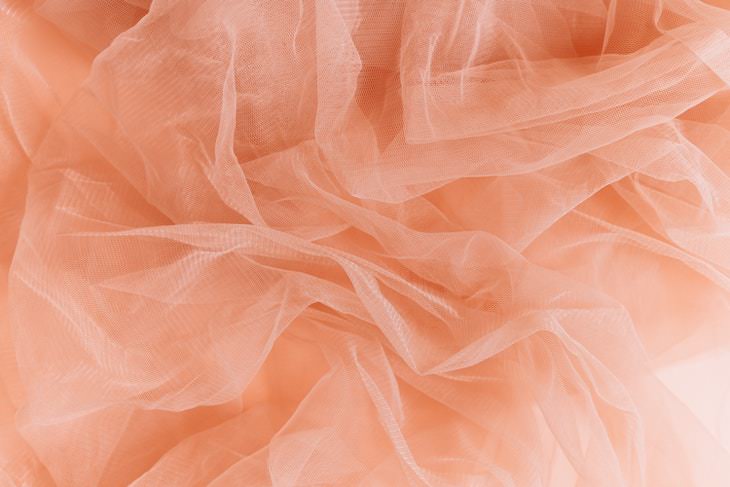
Chiffon is a slightly rarer fabric, but it can be found in women’s blouses, scarves, and fancy dresses, so it’s important to know how to care for it as well. Chiffon is a very delicate and lightweight fabric that can be made of synthetic fibers or silk. You can easily sport chiffon for its thin, airy, and transparent appearance.
Machine washing chiffon is a bad idea. When the time comes to wash chiffon, it’s best to wash it by hand using shampoo or a very mild detergent and warm or cold water. Be very careful when ironing chiffon - it should only be done on the cool setting with a damp cloth in-between the iron and the garment to prevent melting or damage.
6. Lace
Another fancy but rather widespread fabric is lace. Anything from underwear to blouses, dresses, and even curtains can feature this delicate fabric. In the past, lace was mostly made of silk and linen, but these days, it’s mostly made of synthetic fibers.
Due to the intricate details and patterns in lace, washing it can be tricky. Hand-washing by pre-soaking in a mild detergent in cold water and then gently massaging the fabric is recommended. If you have a garment that you insist to launder, you can place it into a lingerie laundry bag and wash on the gentle cycle, but be warned - even this is risky. After washing and rinsing, avoid wringing out the lace - gently press the water out and lay flat on a towel to dry.
7. Viscose/ lyocell
In recent years, so-called semi-synthetic fabrics like viscose, Tencel, and lyocell have become increasingly popular in the clothing industry, and it is easy to see why. The basis for these fabrics is wood pulp, a natural material, which is then processed into yarn. These fabrics have an incredibly breathable feel and silky appearance, and they’re quite lightweight as well.
However, the cleaning recommendations for these fabrics are different from other synthetic fabrics, so take note of these tips:
- Machine-washing in cold water is safe for these items, but we recommend hand-wash particularly intricate articles of clothing.
- Some of these fabrics can wrinkle easily, so it’s best to hang-dry them completely wet (without wringing) and iron them on low if necessary.
- Do not bleach or tumble-dry these items to retain their vibrant color.
8. Silk/ satin
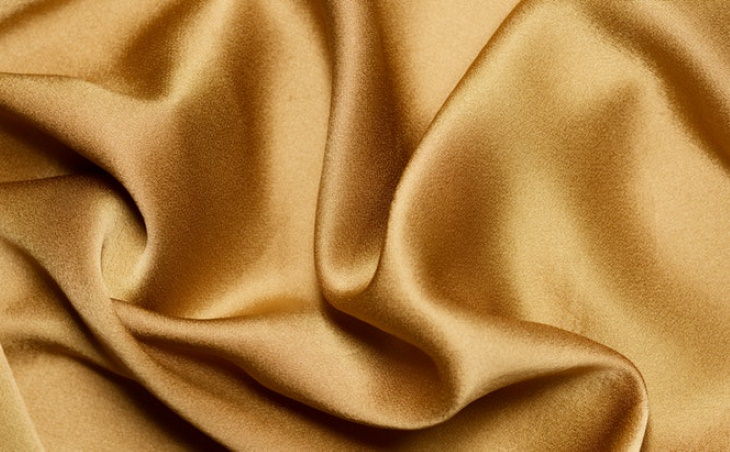
Silk is widely believed to be the most luxurious fabric in the world. The elegance and sheen of this fabric, as well as the huge amount of work that goes into raising silkworms and turning their cocoons into yarn, make it a truly priceless fabric. Few people know that silk is very strong, durable, and it’s also the most hypoallergenic natural fabric too.
Satin is a very similar fabric, but it can be made of cotton, wool, or synthetic fibers as well. If you own anything made of silk or satin, you’ll know that the only issue with these two beautiful fabrics is cleaning and maintenance. But you don’t necessarily have to dry-clean silk and satin, here’s how to care for these fabrics at home:
- The color of silk is very prone to fading and water staining. This is why it should be hand-washed in cool water and a special detergent.
- Wash silk and satin items as quickly as possible to prevent stretching, and then press with a dry towel to absorb any excess water.
- Lay silk items out to dry on a towel without wringing them out.
- If the item is labeled as “washable silk,” you can launder it in the washing machine using a lingerie bag and a gentle wash cycle.
- Store silk in a dark place to prevent color fading, and avoid keeping it in plastic.
Related Article: How to Wash Your Dark Clothes
9. Wool
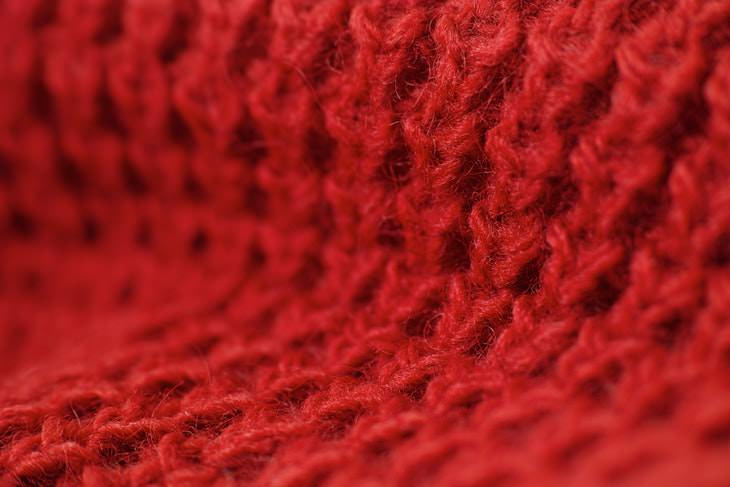
Wool is the last fabric we will discuss today. It is a natural fiber made from the fleece of sheep, llamas, alpacas, or goats. The main advantage of wool is its ability to seal in the warmth of the body, which is why so many winter garments and outerwear are made of wool. It is also very durable and wrinkle-free. Although wool gets a bad reputation for being scratchy, some wool varieties, such as cashmere and Merino wool are very soft and pleasant to the touch.
One of the greatest advantages of wool is its ability to stay fresh without washing. While wool thermal underwear should be washed weekly, wool sweaters only need to be washed a few times a year. Outerwear needs even less cleaning.
There’s a lot of confusion around the care and maintenance of wool clothing. We’re happy to clear things up to you with these tips:
- Refresh wool garments by hanging them outside overnight. The higher the air humidity, the better the results.
- A lingering stale smell or apparent stains are all signs that it’s time to wash a woolen article of clothing.
- Use delicate, enzyme-free detergent for wool. Enzymes destroy wool strands, and small holes may appear on your garment after washing it with an enzymatic cleaner.
- Machine wash wool on a delicate cycle and spin-dry no higher than 800 RPM.
- Despite popular belief, spin-dried wool can be hand-dried. Otherwise, lay flat to dry.
- If you noticed that the garment lost its shape a bit after washing, stretch it out using your hands to reshape it.
Share this useful information with family and friends!

